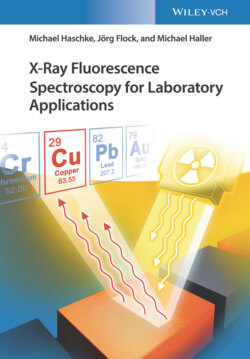Читать книгу X-Ray Fluorescence Spectroscopy for Laboratory Applications - Michael Haschke, Jörg Flock - Страница 37
3.4.1 Grinding of Small Parts Material
ОглавлениеThe pre-crushed materials for further processing should have a grain size of approximately 1–2 mm for hard materials; for soft materials the grain sizes can be up to 10–20 mm. Further processing is then carried out by cutting or grinding. Depending on the material quality, various mills are available for this purpose. Table 3.7 summarizes the available mills for the different materials to be ground.
The selection of an appropriate mill depends essentially on the type of material to be ground. Hard and brittle materials are most effectively crushed by friction or thrusting, and soft and fibrous materials rather by cutting. Cooling of soft and fibrous materials to low temperature, e.g. by liquid nitrogen (LN2), can temporarily convert these materials into a hard and brittle state. When selecting the grinding vessels for very hard samples to be ground one should look for a high-density material (for example tungsten-carbide). For medium-hard specimens good milling results can also be achieved with lighter material grinding tools (steel, agate).
Table 3.7 Mills for fine grinding of powder-like material.
| Type of material | Type of mills | Functional principle |
|---|---|---|
| Milling materials | Size of the starting material | |
| Milling speed/revolution speed | Final grain size | |
| Soft to medium hard, brittle as well as fibrous material | Rotating mill | Comminution by cutting |
| Steel | Up to 10–20 mm | |
| 200–3000 min−1 | 100–200 μm | |
| Soft material, fibers, cloth, textile | Cutting mill | Comminution by cutting |
| Steel | Up to 10–20 mm | |
| 2000–20 000 min−1 | 0.25–10 mm | |
| Medium hard, hard, brittle or fibrous materials (dry or in suspension) | Disk mills | Comminution and homogenization by thrusting and milling between rotating disks |
| Steel, agate | Up to 15 mm | |
| 400–1500 min−1 | 10–20 μm | |
| Dry samples or solids in suspension | Ball mill | Comminution and homogenization by thrusting and milling by beating balls |
| Steel, agate, tungsten carbide | Up to 5 mm | |
| Frequency: 3–25 Hz | 10 μm | |
| Hard to soft materials (dry or in suspension) | Planet mill | Finest comminution and homogenization by thrusting and milling in rotating milling molds |
| Steel, agate, tungsten carbide | Up to 5 mm | |
| 100–1000 min−1 | 1 μm | |
| Medium hard to soft-brittle materials (dry or in suspension) | Mortar grinder | Finest comminution and homogenization by thrusting and milling between mortar and mold |
| Steel, agate, tungsten carbide | Up to 8 mm | |
| up to 80 min−1 | 1 μm |
Figure 3.7 Dependence of fluorescence intensity on grinding time.
The milling times required must be determined by tests. They depend on the sample type, the type of mill, the material of the grinding vessels, and the grinding medium. For preparation as loose material or as a pressed tablet the required fineness of the grinding material and thus the duration of the grinding process should be determined from the measurement of the fluorescence intensity of the analyte as a function of the grinding time. Such a determination is illustrated exemplarily in Figure 3.7. The grinding time can range from a few tens of seconds to a few minutes. It should be noted that samples containing a percentage of oxidizable material (e.g. metals) can absorb oxygen due to the heating during grinding, whereby the composition of the sample material changes.
